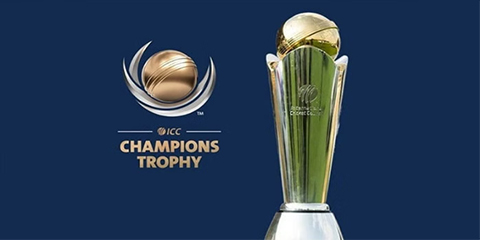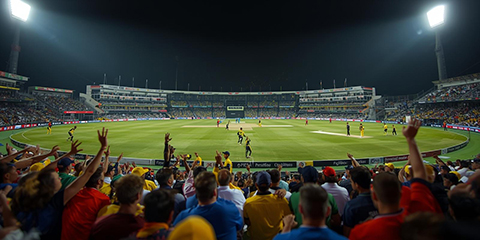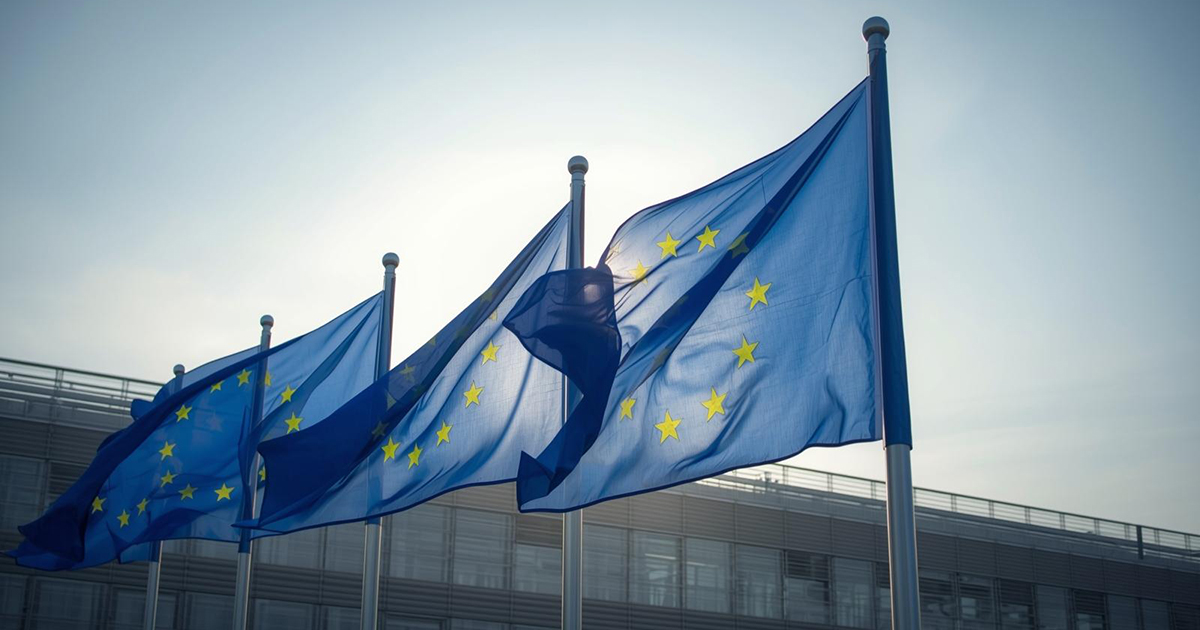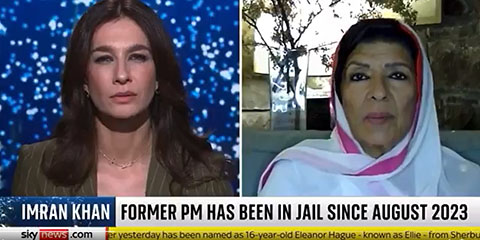A test beyond the pitch: Champions Trophy 2025's political dilemma
JournalismPakistan.com | Published last year | Dr. Nauman Niaz (TI)
Join our WhatsApp channel
ISLAMABAD—In contemplating the prospective outcomes of the deadlock between PCB, the ICC, and BCCI in lieu of the ICC Champions Trophy 2025, a more realistic approach reveals the nuanced complexities of sporting diplomacy, national pride, and the intricate ballet that goes hand in hand with realistic positioning.
1. India Travels to Pakistan and the Tournament Proceeds Unhindered: This outcome symbolizes the spirit of cricket as a gesture of goodwill and cross-border regularization of work relationships. Such a display of mutual respect would propel ICC's foundational mission to bridge divides through sport. However, at this moment, it only looks like an illusion. Should India travel to Pakistan unencumbered by hesitation or discord, the tournament would stand firm, rising above politics to nurture common aspirations beyond the geopolitical realm. Regrettably, for now, it doesn't seem to be happening.
2. A Hybrid Model Unacceptable to Pakistan: Here lies a delicate problem. Proposing a model that severs the host nation's autonomy challenges the tournament's integrity and would set a troubling precedent. History abounds with examples of nations' declining participation on foreign soil. Yet, the ICC upheld the sanctity of the traditional format. When the West Indies and Australia refused to travel to Colombo during the Wills World Cup 1996, they had to forfeit their points. England refrained from travelling to Zimbabwe in 2003, and New Zealand abstained from going to Kenya under threat; the ICC’s stance was firm: forfeiture followed refusal. To institute a hybrid model now risks fragmenting the shared values and unity that the ICC’s authority must represent. Nonetheless, PCB should have at least done its work pragmatically. They have gone out in the open, committing the ‘hybrid’ model wasn't acceptable to them, making it their narrative and an infallible stance, a famous slogan contrary to what could hit them back like a sledgehammer. Ironically, this is shambles.
3. Replacing India with Another Nation: An option that may seem pragmatic and by the rules, yet it risks diminishing the essence of the tournament since the global broadcasters had picked up the rights, paying massive prices primarily having been promised a minimum of three matches between the two archrivals in this cycle. Cricket’s main essence, even more than The Ashes between England and Australia or the Trans -Tasman series between Australia and New Zealand, has been so shaped that the India versus Pakistan matches are on top of the list of the audience, sponsors and broadcasters. Depriving the tournament of this iconic match-up would be a disservice to the spirit of cricket and fans worldwide, casting a shadow over the event's resonance.
Reportedly, the ICC Broadcast Rights holders Star Disney have approached the ICC and intimated that if India withdraws or is not included in the ICC Champions Trophy 2025, they would like to reenact their sponsorship deals or back out. This leaves ICC in a quandary. Furthermore, Anurag Dutt, the CFO of the ICC, has purportedly informed the PCB that India provides 80% of the total revenue share and takes away up to 38.5% while PCB adds 3% to the total revenue and takes up to 5.75% and in case if there are no India versus Pakistan matches in future, PCB’s total annual provisions will be markedly reduced which are provided by the ICC to them for running and developing cricket in the country.
4. Relocating the Tournament to a Neutral Venue: Though seemingly neutral, this choice compromises ICC’s commitment to its members. Such a shift from Pakistan undermines the sanctity of hosting rights and renders the assurances made to the PCB hollow. Should the ICC abandon its promised host, litigation could ensue, which would be an unsightly manifestation for world cricket. If this is done, then PCB will lose USD 65 million due for hosting the tournament, and it will inflict them severely.
5. Postponing the ICC Champions Trophy 2025: An ostensibly deferential gesture, yet one that sidesteps rather than confronts the issue at hand. Such indecision belies the ICC’s stature as a member and a legislative body meant to guide the sport with judicious clarity rather than delay. Cricket's spirit flourishes through certainty and resolve, not procrastination.
If the ICC, as the legislative body of cricket, fails to uphold Pakistan's hosting rights, its authority risks marginalization. Broadcasters vested in the iconic India-Pakistan match(es) would undoubtedly feel the quivers, as illustrated by the reshuffled groups in the 2017 Champions Trophy, undertaken purely to guarantee this match-up. Without the attraction of this encounter, broadcasting revenues would falter. In a ripple effect, since ICC is a non-profit member organization, it will bill the damages to all the members. BCCI may not be affected by the Indian Premier League as their solid backup; others reliant on ICC grants would bear the financial brunt.
Currently, the ICC must look upon itself as a legislative compass for cricket. Time is receding, and with it, the opportunity to preserve both the tournament's integrity and the host's rights. Should India's reluctance be unsubstantiated by force majeure, the ICC must summon the courage to penalize the BCCI, which is most unlikely because of India's financial inputs, their clout, the majority of the global broadcasters being Indians and above all, the new ICC President Jay Shah has most vital links with India's incumbent government and a robust political affiliation takes charge on December 1, 2024. Only through such resolve can the ICC reinforce its pledge to cricket, its members, and the billions who find unity within its landscape; nonetheless, India remains a Big Boy dictating terms, and the rest of the member boards hardly endeavour to stand up for the reasons we shall be discussing and elaborating further.
Since 2007, with the rise of the Indian Premier League (IPL), the Board of Control for Cricket in India (BCCI) has emerged as an unparalleled entity in world cricket's landscape. The infrastructural strength, meticulous development, and superior commercial models underpinning Indian cricket have propelled BCCI to a place of exceptional influence and robust impact.
India vaunts an impressive array of contemporary cricketers, complemented by an enviable backup, talent pool, bench strength, and salient features of any top team or board worldwide. Supported by domestic pathways and first-class cricket furnished with state-of-the-art infrastructure, ably organized, and sustained by substantial financial resources, Indian cricket's revenue-generating capacity is now unrivaled. The Indian Premier League (IPL) alone, a cornerstone of their financial robustness, has witnessed its brand value expand from USD 25 billion to a flabbergasting USD 30 billion, evidence of India's incomparability worldwide.
It is irrefutable that, of the annual USD 600 million ICC disperses to the member countries, India attracts an impressive USD 231 million, an imposing 38.5% of the world's cricket economy. Paradoxically, England follows at a modest USD 41.33 million (6.89% of the aggregate), trailed by Australia at USD 37.53 million (6.25%), with Pakistan picking USD 34.51 million (5.75%). This disparity is no coincidence but rather a reflection of the overpowering revenue imbalance that exposes the inequality between India and the rest of the world. Through its vast sponsorships and sweeping and equally widespread broadcasting agreements, India contributes nearly 80% of the ICC's total revenue, an impact that remains largely unchallenged.
India's financial influx into cricket has metamorphosed the sport globally, driving its evolution from traditional formats to fast-paced, lucrative leagues. With the Indian Premier League (IPL) at the forefront, cricket in India has attracted vast investments from sponsors, media rights, and brand partnerships, making it one of the wealthiest leagues in the world. This financial power has allowed India to heavily influence decisions within the International Cricket Council (ICC), affecting everything from match schedules to player priorities. The lucrative salaries offered in the IPL and other domestic leagues have drawn top talent worldwide, effectively shifting the balance of cricketing power toward India. Furthermore, with advanced training facilities, innovative technology, and media-savvy marketing approaches, India's investments have significantly raised cricket's visibility and appeal globally. This financial muscle has empowered BCCI and reshaped the global cricketing ecosystem, making India a central player in the sport's future direction and commercial success.
The Depth of India's Marketing Influence
The reflective depth of India's market influence has brought about a fundamental shift within the framework of global cricket broadcasting. Where once the ICC relied upon top international broadcasters to sublicense broadcast rights (with digital rights following suit), it has now resolved to manage these sublicensing rights independently, segmenting its territories with precision. Asia, initially treated as a unified market encompassing India, Pakistan, Sri Lanka, Bangladesh, and Afghanistan, has witnessed a partition: India now stands alone as a distinct territory. Such was the magnitude of India's commercial value that, in the preceding cycle (2015–2023), ICC's Broadcasting and Digital GlobalRights attracted USD 2.2 billion collectively; in the present cycle, however, the Indian market alone generated a staggering USD 3 billion, while the combined remaining territories attracted up to USD 3.2 billion. Digital rights in India accounted for USD 2.2 billion, underscoring the country's unparalleled significance in cricketing commerce.
The depth of India's market influence in cricket is unparalleled, reshaping the sport economically and culturally. With a massive fan base and an insatiable appetite for cricket, India has become the largest and most lucrative market for cricketing events, broadcasting rights, and sponsorship deals. Major corporations and brands vie for visibility in the Indian cricket market, knowing that partnerships with Indian teams or events like the IPL can generate substantial returns. This market influence extends globally, with cricket boards and players from other countries adjusting their calendars to accommodate India-centric tournaments, given the revenue potential from Indian viewers and advertisers. The Board of Control for Cricket in India (BCCI), backed by substantial income from broadcast rights, is now one of the wealthiest sports organizations in the world, allowing it to wield considerable influence within the International Cricket Council (ICC) and set agendas that prioritize high-revenue tournaments. India has transformed the global cricket landscape through its financial reach, making it the focal point of the sport's commercial activities and strategic decisions.
The Question of Broadcasting Rights
If we turn to the Indian Premier League (IPL) and its Broadcasting & Digital Rights, the numbers for the 2023–2027 cycle reflect an almost prodigious escalation in value: each match holds Rs 57.5 crore for television rights and Rs 50 crore for digital broadcasting rights. For the 2025 IPL, Aramco of Saudi Arabia has injected an additional USD 5 billion, elevating the IPL's brand valuation from USD 25 billion to an astounding USD 30 billion, positioning it as the world's second most valuable league, surpassed only by the National Football League (NFL) of the United States.
The metrics here are monumental in a world where success is often gauged by audience reach. The 2011 ICC World Cup final between Sri Lanka and India commanded an audience of 558 million, while the semi-final clash between India and Pakistan attracted 495 million viewers. Comparable statistics from subsequent tournaments reveal the magnitude of India's role in driving global viewership: 300 million tuned in for India's 2015 World Cup match against South Africa, 324 million for the 2017 Champions Trophy group-stage encounter between India and Pakistan, and an unprecedented 400 million for the final of the same tournament. In 2021, the T20 World Cup match between India and Pakistan engaged 167 million, followed by 256 million for the 2022 tournament.
The viewership data for the 2023 ICC World Cup further underscores this trend, with 16.9 billion digital video views and a remarkable 158% increase in digital audience engagement. Individual match statistics illuminate the vast audience interest: the final between India and Australia drew 59 million digital viewers. At the same time, India's semi-final against New Zealand saw 53 million, and the group-stage matches attracted similar numbers. As measured by the Broadcast Audience Research Council (BARC), Broadcast viewership recorded cumulative numbers reaching 220.63 billion minutes in 2011, 230.49 billion minutes in 2019, and 5.01 billion minutes in 2023. The India-Pakistan match in the 2023 World Cup captured an aggregate of 398 million viewers—173 million on television and 225 million on digital platforms.
The Pakistan Cricket Board's (PCB) stance on upholding merit and equality in international cricket governance is moral and justified. No member nation, however influential, should dictate terms to others, especially in contravention of agreed principles. The International Cricket Council (ICC) must resist pressures that allow any one board to wield disproportionate influence, particularly in a situation where India's claim of force majeure to avoid playing in Pakistan lacks substantive validity. Moreover, it would be unconscionable and a betrayal of trust to the full-member boards, including England, Australia, New Zealand, and Bangladesh, all of whom have recently toured Pakistan. Each of these members, alongside India, signed agreements recognizing Pakistan as the 2025 ICC Champions Trophy host, thus acknowledging the PCB's right to host on home ground.
Should the ICC falter in upholding these agreements, whether by enforcing a hybrid model or moving the tournament to a neutral location, Pakistan will lose an estimated USD 65 million in hosting revenues, not to mention potential reductions in its annual grant. Such outcomes would damage Pakistan financially and undermine the spirit of equity and mutual respect that the ICC is supposed to uphold. PCB's commitment to resisting these pressures, even in the face of possible financial setbacks, is commendable. Yet, it raises the question of how long they can withstand such economic strains.
The allocation of hosting rights to Pakistan followed comprehensive evaluations, inspections, and approvals by the ICC Evaluation Committee and Board, with the BCCI's representatives endorsing Pakistan's status as host. The abrupt resistance from the BCCI is not only regrettable; it is a stark reminder of the rampant influence exerted and orchestrated by a powerful board, a reality that has seen India's cricket overriding the international landscape like a white elephant, seemingly disregarding the implications for the cricket's broader alliance. For now, the BCCI's influence is impregnable rather indisputable, yet history reminds us that such unilateral power can breed consequences that reverberate across generations.
Should the evolving cricket markets in the USA or China eventually draw the interest of sponsors seeking to diversify revenue beyond India, this balance of power may well shift. Until then, however, we are left observing an ICC structure where one member holds dominance while others linger on the periphery. In light of these dynamics, Pakistan's steadfast adherence to merit-based principles is admirable and deserving recognition. Yet one must ask, will they be able to sustain this stance in a future where financial pragmatism too often subordinates principle? Perhaps, as the proverb holds, Money talks, and bullshit run a marathon.

























